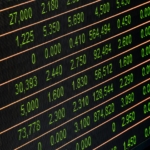Economic Update August 2019
Economic Update – August 2019
by Infocus Author
Within this month’s update, we share with you a snapshot of economic occurrences both nationally and from around the globe.
US Federal Reserve cuts rate
– US economic data strong
– Australia cuts rates too
– China data surprises on upside
We hope you find this month’s Economic Update as informative as always. If you have any feedback or would like to discuss any aspect of this report, please contact us.
The Big Picture
Anyone focused on US economic data – but avoiding media coverage – could be forgiven for being shocked about the current US Federal Reserve (the Fed) move on interest rates.
The Fed had not cut rates since 2008 until July 31st and last raised rates in only December 2018. The latest GDP growth came in at 2.1% when the Fed had expected 1.8% and the markets 2.0%. The consumer component of GDP was particularly strong at +4.3% but business investment (with the uncertainty of trade war solutions) fell 5.5%.
The latest US jobs number saw 224,000 new jobs created against an expected 160,000 while unemployment (at 3.7%) was all but at historic lows. Wages growth was 3.1% and core inflation was 2.1% (the target is 2.0%).
Retail sales came in at +0.4% for the month. That made three good readings in a row after the first was initially printed as negative before being revised upwards in subsequent months. The US consumer is strong and consumers contribute about 70% to economic growth hence the importance of domestic consumption to US growth.
So why was the market pricing in a certain cut for the end of July with a material chance of a double rate cut? The day before, a CNBC survey pronounced that only 48% thought the Fed should have cut at the end of July while 95% said they thought the Fed would cut!
There was absolutely no case for a cut on past data alone. The market, and President Trump, were bullying the Fed into an easing programme for two reasons. The first was as an insurance policy against future problems flowing from the US-China trade war. The second was because of the easing bias that is sweeping central banks across the world. In a race to the bottom, the US needs to keep its policy aligned with rest of the world.
That the Fed just cut rates by one quarter of a point while flagging further future cuts has introduced a new risk. What if the US economy continues to be strong and maybe even grow stronger on the back of the rate cuts?
On the face of it, a strong US economy is great – except that the Fed would then be forced to hike rates again. Such flip-flopping would likely cause further uncertainty in the economy and introduce the chance of the Fed then tightening too quickly and too far. Over-reaction to trying to slow down a strong economy is usually the basis for causing a recession! But, in the meantime, there would likely be strong gains to be made on markets if that scenario pans out.
Either way – with a necessary monetary easing or one unnecessarily forced on the Fed – markets should continue their positive aspect with new all-time highs being reached.
At home in July, the Reserve Bank of Australia (RBA) cut rates for the second month in a row. That was after about two and a half years on hold. The new official rate of 1% is not good news for conservative investors in cash and/or term deposits as the whole interest rate structure is expected to follow suite.
Our unemployment rate was again 5.2% and, while not showing sign of material improvement, is not the stuff of recessions. On top of that the government got its $158bn tax package through parliament. Around 10,000,000 tax payers may soon get an extra $1,000 or so in rebates. Perhaps that is why the only bright light in Westpac’s consumer sentiment index was the surveyed imminent purchase of a domestic consumer durable such as a new washing machine or fridge.
Those hoping for gloomy news at first took comfort in China’s latest slightly lower economic growth statistic of 6.2%. It was bang on expectations but retail sales easily beat expectations (9.8% against 8.3%) and industrial output (5.8% against 5.5% expected) spoilt their party. China is not (yet?) showing signs of having economic problems.
With US and China economic data strong, and future Australian data supported by tax and interest rate cuts, all looks reasonably stable for investors in the months to come – and maybe for even a lot longer!
Asset Classes
Australian Equities
At last the ASX 200 closed above the previous high posted in late 2007! Of course, when dividends are included that old high was breached a long time ago.
We have the ASX 200 as being a bit overpriced, making headwinds for further price gains the short-term. However, we find the underlying earnings story sufficiently strong to propel the market even higher over the rest of 2019. However, the August reporting season for companies listed on the ASX will colour that story for the rest of 2019.
Foreign Equities
The S&P 500 breached new all-time highs in July and there doesn’t seem to be any end in sight for the rally – at the moment. At the end of July about half of US listed companies had reported their second quarter earnings. Around 75% of those companies had so far beaten expectations – the usual number because expectations are often reset when the going gets tougher. However, the underlying earnings story is still quite positive. And it’s not just the big tech companies that look promising. Consumer discretionary companies like Starbucks and MGM posted great results and their share prices jumped over 5% on the news.
Bonds and Interest Rates
The big ‘lever’ all central banks have at their disposal to attempt to meet their targets – such as price stability and full employment – is coming under question.
There is a fairly clear linkage between interest rates and unemployment. Higher rates are a disincentive to investment which in turn causes an upturn in unemployment. Lower rates stimulate investment intentions given everything else is unchanged. The direct link between rates and inflation is less clear. It is usually argued that, as unemployment rates fall, there is pressure on wages because resources become scarce. Increases in wage inflation might then reasonably be expected to flow through to increases in price inflation.
The problem is that around the world (but particularly in the US) the link between unemployment and inflation appears to be broken. Unless there is a strong and stable negative (or inverse) relationship between unemployment and inflation, central banks cannot successfully target both unemployment and inflation with only one instrument – interest rates.
The (inverse or negative) relationship between unemployment and wage inflation was first reported by Bill Phillips, a New Zealand professor at the London School of Economics, in a 1958 academic publication. At various times, the stability of this relationship has been called into question. In the 1970s the so-called Phillips curve was widely thought to be no longer relevant.
By modifying the hypothesis in various ways, scant support has been found for a modified Phillips curve in more recent times. But a relationship which only lasts for a short time before changing is of no use to policy makers. In his July 12th testimony before Congress, the Fed chair pronounced the Phillips curve is ‘dead’.
There is nothing unusual about (academic) economic hypotheses coming in and out of favour. Economics is not an exact science. However, in the case of a Phillips curve, failure of the curve means that central banks cannot reasonably meet their dual objectives.
It is not a question of changing the target band for inflation to a new lower level. A new instrument needs to be added to the central banks armoury or the inflation target needs to be dropped altogether!
Nevertheless, central banks are on a new co-ordinated round of policy easing and this does not bode well for conservative investors. Cash rates, and longer bond yields, are likely to be lower for longer. As a result, some investors are moving to, or staying with, the so-called ‘bond proxies’: stocks that produce strong reliable dividends with not necessarily any great prospect of capital growth. Many infrastructure and utilities stocks are prime examples of bond proxies.
The Fed cut as expected in July and also ended its debt drawdown two months early. At first the market reaction was neutral but then Wall Street fell by over 1% when, under questioning, Fed Chairman Powell, said that it was not necessarily the start of a trend.
The RBA also cut official cash rates but the ECB was ‘on hold’. However, the ECB president stated that it had an easing bias for future policy.
Other Assets
Oil prices have been far less volatile than one might expect given the sanction issues over Iran’s nuclear activities.
The price of iron ore rose slightly over July and it is up 66% on the year-to-date.
The price of gold was up fractionally over July but has risen 12% in $US terms since late May.



